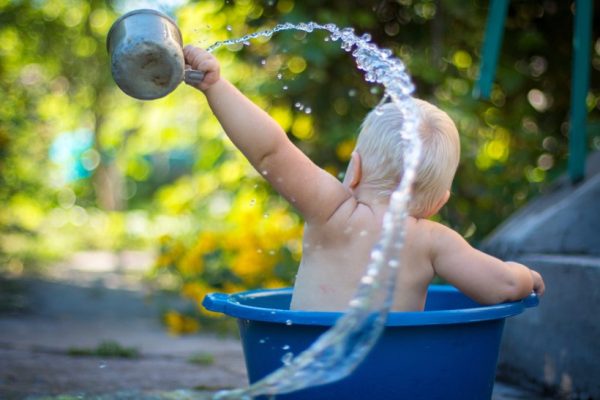
Keep your baby germ free and safe
Little people while crawling inside house will stick their hands in germy, dirty things and put hands in mouth. It is natural for mothers to freak out and worry about child’s health. Well, germs are unavoidable. However, one keep germs away from children as much as possible. That means it is time to clean the house as clean as possible to reduce the surface germs where the child crawls, tries to hold things or touch objects in their way. Here are general tips to help keep a healthier home with a baby around.
Some of the items that children will come in contact everyday are listed below. These items generally carry germs on the surface. Make sure to clean the surface of these items as much as possible:
- Remote control
- Furniture
- Phones
- Doorknobs
- Refrigerator handles
- TV remotes
- Toy storage bins
- Light switches
- Faucets
- Dish washing machine surface
- Dish towels
- Toy baskets
- Floors and carpets
Some general tips to clean baby’s surroundings are below:
1. Make sure you clean and disinfect: Living room things like furniture, TV remotes are place for children to play. While that remote control the baby just started playing with may look perfectly clean, it’s most likely teeming with germs that causes illness. And while you may be washing surfaces well with ordinary soap, those germs can still remain! Use proper cleaning surface like disinfectant wipes and clean the surface.
2. Clean as you go: With a new baby, time is of a premium. Make the most of every minute by spot cleaning and disinfecting throughout the day. Keep disinfectant wipes, cleaning cloths and hand sanitizer in rooms and where your child is unable to reach. So you can quickly clean and disinfect germy areas such as the changing table and diaper pail.
3. Keep floor and carpets clean: Babies who learn to crawl, sit and stand will use floors and carpet. Use vacuum cleaners to pick off the dust from the carpets, floor, hidden corners, etc. Mop the floor with floor cleaners and allow it to dry. Use baking soda while vacuuming and cleaning carpets.
4. Sanitize daily: Sanitize things that can be exposed to child. Use gentle sanitizers around babies, pets and food. Use sanitizers that does not have harsh chemicals or fumes so you can just spray and walk away.
You can make homemade cleaning products that are safe for children and the environment. Prepare a safe cleaner at home using: 1 cup distilled white vinegar, 1 cup distilled water, one-quarter cup hydrogen peroxide, six drops of tea tree oil and six drops of essential oil. Mix and pour this solution in a spray bottle and you have a great anti-bacterial spray that won’t hurt the baby.
5. Wash your hands frequently: When you come inside home, if you feel that you hands need a wash, don’t hesitate. Wash hands and pick up your child. This helps to avoid passing those germs on to your little bundle of joy. Using warm water and soap, scrub your hands together vigorously for at least 20 seconds.
6. Home deodorizer and dusting: You should generally dust off the dirt from the curtains, shelves, etc. You could also use a wet cloth to remove dust off the shelves, tables, lights, etc. Removing dust often keeps away allergies from the baby.
7. Baking soda helps: You can clean baby toys with baking soda and water. Baking soda acts as a natural deodorizer and use it to sprinkle on shoes.
8. Baby toys: White vinegar is the most useful product among different kinds of vinegar. White vinegar helps to clean baby toys and utensils like sippers or milk bottles.
9. Wiping baby’s hands or body: Baby wipes contain a mild antiseptic and are for use on skin. Disinfectant wipes may contain harsh chemicals and should not be used on skin. Always label each container. Use a permanent marker. Never mix cleaners. Keep all cleaners away from children.
Germs, dust all are part of growing life. Some illness happens for children. You cannot control children by restricting their activities. What is important is to make sure that cleaning the areas and keep practicing hygiene in everyday helps for children to learn and they follow the instructions as they grow and go to schools and other public places.
Source: www.werindia.com
Image credit: Photo by Lubomirkin on Unsplash (Free for commercial use)
Author: Sumana Rao | Posted on: May 6, 2022
« Household chemicals and children safety Kids – How to ask adults for help? »






















Write a comment